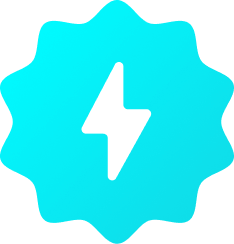7+ NoCode tools for automation, app development, and web development

Team Fueler
05 Jun, 2023

No code tools are software platforms that allow users to create applications, websites, databases, and other digital products without writing a single line of code. They use graphical user interfaces (GUIs), drag-and-drop elements, and pre-built templates to simplify the development process. No code tools are also known as visual programming or codeless tools.
No code tools are becoming more popular and powerful as they enable anyone to build software without technical skills or hiring developers. They can also save time and money for businesses, organizations, freelancers, and startup founders who want to launch their ideas quickly and efficiently.
There are different kinds of no code tools for different purposes and needs. Here are some of the main categories and examples of no code tools that people can use in 2023:
No Code Tools for App Development
App development tools let users create mobile or web applications. They usually offer features such as database management, user authentication, push notifications, integrations, and analytics.
Some examples of no code app development tools are:
- Adalo: Adalo is Android and iOS app development tool that lets users drag and drop building blocks to create the interface of their app.
- Google AppSheet: A no code tool that uses AI and automation to create apps from data sources such as spreadsheets, databases, or forms. It also offers features such as workflows, logic expressions, actions, and security
- Glide: A no code tool that lets you create mobile and web apps from Google Sheets or Excel. You can use Glide to build portals, dashboards, directories, and more with a visual app builder and components - no coding required. Glide also offers features such as automation, integrations, team inbox, and analytics. Glide is used by over 85,000 companies to build custom business software.
No Code Tools for Web Development
Web development tools let users create websites that can be hosted online and accessed by anyone with a browser. They usually offer features such as design elements, content management, hosting, domain name, and SEO.
Some examples of no code web development tools are:
- Webflow: A no code tool for website design and development that lets users create responsive websites with full control over the layout, style, and interactions. It also offers features such as CMS, e-commerce, hosting, animations, and integrations. It is a versatile platform that empowers designers to bring their creative visions to life and build visually stunning and functional websites.
- Softr: A no code tool for complete beginners that lets users create websites from ready-made blocks and templates. It also offers features such as forms, authentication, database, hosting, and SEO
- Typedream: A no code tool that lets you create websites, link in bios, forms, blogs, and digital products from your data. You can use Typedream to build stunning and fully responsive landing pages, blogs, e-commerce stores, and more with a Notion-like editor and templates - no coding required. Typedream also offers features such as payments, integrations, hosting, and SEO. Typedream is used by over 118,000 websites to create and sell online.
- Notion: It a very versatile tool which is very minimal and easy to use. Though it is a note taking tool, you can use it to create landing pages and make simple and minimal websites your yourself. It might not be a great tool to make websites if you have a big business, you can always make a minimal website from it.
No Code Tools for Automation
Automation tools let users automate tasks and workflows that involve data processing, communication, or integration between different apps or services. They usually offer features such as triggers, actions, conditions, variables, and logs.
Some examples of no code automation tools are:
- Zapier is a powerful no-code automation tool that empowers users to connect and integrate over 3,000 apps and services, creating seamless workflows that automatically execute when specific events occur. With Zapier, you can effortlessly automate tasks and processes to improve productivity and efficiency.
For example- You want to reward subscribers to your newsletter with a free gift. With Zapier, you can create a "zap" that triggers when someone signs up for your newsletter. This zap can lead them to Gumroad, where they can claim their gift. This automation eliminates the need for manual intervention, saving you time and effort.
- Integromat: A no code tool for automation that lets users create complex workflows with a visual interface that shows the data flow between different apps and services. It also offers features such as routers, scenarios, error handlers, and iterators1.
- Parabola: A no code tool for automation that lets users transform and manipulate data from various sources with drag and drop steps. It also offers features such as formulas, functions, APIs, and schedules1
No Code Tools for Data Collection
Data is very crutial for building apps and web development. There are a few great tools which helps you collect data and later you can connect it with tools which will host it.
Some examples of no code tools to host data are:
- Airtable: A no code tool that lets you host data that you can later use to create a no code tool. You can use Airtable to store, share, and edit data in a spreadsheet-database hybrid format that supports various types of fields, views, and formulas. You can also use Airtable to build custom apps from your data with a drag and drop interface and integrations - no coding required. Airtable is used by over 250,000 organizations to manage work, track inventory, plan events, and much more.
- Google Spreadsheet: It serves as a versatile tool for collecting and organizing data, while also functioning as a backend tool for various applications. It has a very user-friendly interface and collaborative features. It simplifies data collection and management, making it an invaluable resource for individuals and businesses.
Some supporting tools
- Super: It helps you to convert your Notion website into a good looking and little more functional. You can also customize the website by changing the background colour, text and also customize the link
- Tally: It helps you create forms to collect data from any place. You just need to embed it in your app or website
Conclusion
To sum it up, No-Code tools are a great way to let your ideas come out in the world even if you don’t know a single line of code. You might think, using no code tools, you can create a portfolio for your work, but for those looking to show off their work, Fueler is the best portfolio tool for freelancers and knowledge workers.
Here are seven reasons why Fueler is the #1 portfolio tool for freelancers:
- Efficiency: Fueler makes it easy and quick to create and share your work with the world.
- Custom Portfolio: Fueler lets you create a personalized and professional portfolio that stands out in seven
- Discovery: Fueler helps you get noticed by showcasing your work to a wider audience.
- Make your Project Private: Fueler helps you make your sensitive projects private
- Curated Opportunities: Fueler offers tailored job opportunities in various fields.
- Profile Analytics: Fueler provides insights on how your work is performing, so you can improve.
- SEO Indexing: Fueler optimizes your portfolio for search engines, making it easier to find.
- Professional and Credible: Fueler is a trusted platform that enhances your professional reputation.
Thanks for Reading.
What is Fueler Portfolio?
Fueler is a career portfolio platform that helps companies find the best talent for their organization based on their proof of work. You can create your portfolio on Fueler, thousands of freelancers around the world use Fueler to create their professional-looking portfolios and become financially independent. Discover inspiration for your portfolio
Sign up for free on Fueler or get in touch to learn more.


